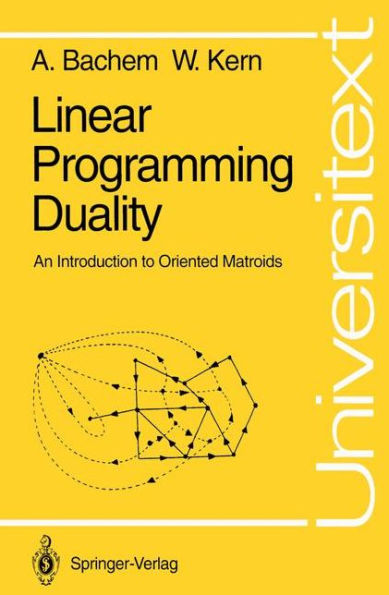5
1
9783540554172


Linear Programming Duality: An Introduction to Oriented Matroids / Edition 1 available in Paperback

Linear Programming Duality: An Introduction to Oriented Matroids / Edition 1
- ISBN-10:
- 3540554173
- ISBN-13:
- 9783540554172
- Pub. Date:
- 08/26/1992
- Publisher:
- Springer Berlin Heidelberg
- ISBN-10:
- 3540554173
- ISBN-13:
- 9783540554172
- Pub. Date:
- 08/26/1992
- Publisher:
- Springer Berlin Heidelberg
99.99
In Stock

Product Details
| ISBN-13: | 9783540554172 |
|---|---|
| Publisher: | Springer Berlin Heidelberg |
| Publication date: | 08/26/1992 |
| Series: | Universitext |
| Edition description: | 1992 |
| Pages: | 218 |
| Product dimensions: | 6.10(w) x 9.25(h) x 0.36(d) |
From the B&N Reads Blog
